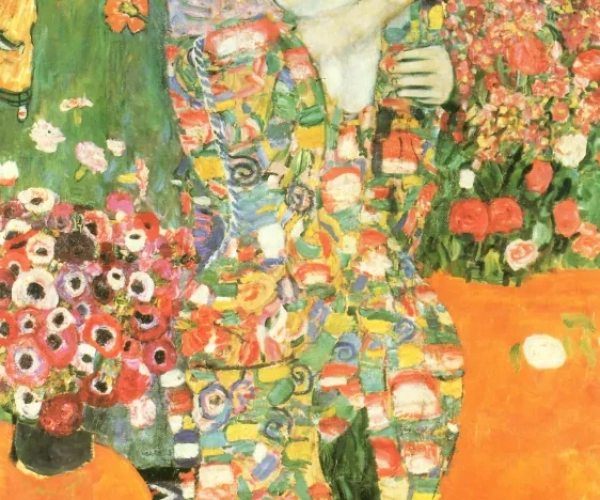The Dancer
"The Dancer" by Gustav Klimt is a dazzling representation of the Art Nouveau movement, which emerged in the late 19th century, with its emphasis on intricate patterns, decorative elements, and symbolic motifs. Klimt's use of gold leaf and flat, two-dimensional forms in "The Dancer" creates a mesmerizing and almost otherworldly atmosphere. The figure of the dancer is portrayed with sensuality and grace, her flowing garment and sinuous pose evoking a sense of movement and fluidity. The use of ornamentation and decorative patterns adds to the overall ornate and opulent quality of the artwork.
Klimt's incorporation of geometric shapes, stylized flowers, and swirling lines reflects the influence of Byzantine mosaics and Japanese woodcuts, creating a fusion of different artistic traditions. The blending of the human form with abstract and symbolic elements adds depth and complexity to the composition. The rich, vibrant colors and intricate details in "The Dancer" convey a sense of luxury and exoticism, characteristic of Klimt's iconic style.
The figure's enigmatic gaze and the ambiguity of the background draw the viewer into the enigmatic world of the painting, inviting interpretation and contemplation. "The Dancer" encapsulates Klimt's exploration of themes such as beauty, desire, and the feminine mystique, reflecting the artist's fascination with the human form and sensuality. Overall, "The Dancer" represents a harmonious fusion of the sensual, the decorative, and the symbolic, showcasing Klimt's unique artistic vision and timeless appeal.
In conclusion, "The Dancer" by Gustav Klimt is a captivating example of the artist's innovative approach to figuration, decorative patterning, and symbolic storytelling, making it a significant and enduring contribution to the Art Nouveau movement and the broader history of modern art.







No Comments Yet...